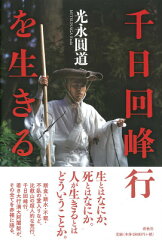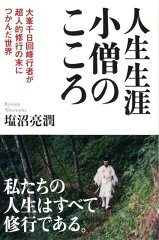
<prologue>
I started a blog called “The Baby Boomer Generation’s Miscellaneous Blog”(Dankai-sedai no garakutatyou:団塊世代の我楽多(がらくた)帳) in July 2018, about a year before I fully retired. More than six years have passed since then, and the number of articles has increased considerably.
So, in order to make them accessible to people who don’t understand Japanese, I decided to translate my past articles into English and publish them.
It may sound a bit exaggerated, but I would like to make this my life’s work.
It should be noted that haiku and waka (Japanese short fixed form poems) are quite difficult to translate into English, so some parts are written in Japanese.
If you are interested in haiku or waka and would like to know more, please read introductory or specialized books on haiku or waka written in English.
I also write many articles about the Japanese language. I would be happy if these inspire more people to want to learn Japanese.
my blog’s URL:団塊世代の我楽多(がらくた)帳 | 団塊世代が雑学や面白い話を発信しています
my X’s URL:団塊世代の我楽多帳(@historia49)さん / X
<Addition on 2/14/2023> Please also see the article on “Fudaraku-tokai”.
Please also see the article on “Fudaraku Tokai,” which is more amazing than the 1,000-day Kaiho Gyo, and is the ultimate renunciation of the body. Please take a look at the article “Fudarakutokai is more amazing than the 1,000-day Kaiho Gyo!
Do you know what “1,000-day Kaiho Gyo” is? Most of you have heard of it, but most of you are probably only aware that it is an ascetic practice that takes place on Mt. Hiei.
1.What is Sen-nichi Kaiho Gyo?
Sen-nichi-kaiho Gyo is one of the Tendai Sect’s pilgrimage practices on the mountain of Hieizan, which straddles Shiga and Kyoto Prefectures.
The “achiever (mangyo sya)” is called “Hokurei Daigyoman O-ajyari” (Great Acharya).
The practice is called “one thousand days,” but the actual number of days walked is “975.” It is said to be a practice to help people understand that they are not doing it to attain enlightenment, but to get closer to it.
As an aside, I learned in “Shinran” written by Eiji Yoshikawa or Hiroyuki Itsuki that Shinran Shonin, the founder of Jodo Shinshu, also suffered from vexations when he was young and trained at Enryaku-ji Temple, but was ultimately unable to attain enlightenment.
The 1,000-day Kaiho Gyo takes place over a period of seven years, with 100 days per year in the first three years and 200 days in the fourth and fifth years. The pilgrims depart at 2:00 a.m. after the service at Mudo-ji Temple, chanting “Shingon” and praying at 260 locations, including the East Pagoda, West Pagoda, Yokogawa, and Hiyoshi Taisha Shrine, covering approximately 30 km in an average of 6 hours.
If they are unable to continue their practice, they are to “commit suicide”. For this purpose, a “death cord,” a dagger, and a burial fee of 100,000 yen must be carried at all times. The participants wear hats in the shape of unopened lotus flowers, white clothes, and sandals.
After five years (700 days) of practice, the priest will “enter the temple. This is a nine-day (about seven and a half full days) “Four Mu Gyos(四無行)” of fasting, fasting from water, fasting from sleep, and fasting from lying down in the Myo-o-do hall of Mudo-ji Temple.
Before entering the hall, the ascetic performs a “living funeral service” and chants the mantra of Fudo Myo-o 100,000 times while entering the hall. At 2:00 a.m. every night, they leave the hall to draw holy water from a holy well nearby and offer it to Fudo Myo-o inside the hall.
When he completes his entry into the hall (“do-sagari”), he becomes an acharya, also known as “Fudo-myo-o of the living,” and is welcomed with joined palms by his followers.
Thereafter, he will move from “self-interested action” for his own sake to “altruistic action” for the salvation of sentient beings.
In the sixth year, a return trip to Akayama Zen temple in Kyoto will be added to the previous itinerary, and the walk will continue for 100 days, covering approximately 60 km per day.
In the seventh year, the tour will continue for 200 days, with the first 100 days being the “Kyoto round trip,” covering 84 km in total, and the second 100 days returning to the 30 km route in the middle of Mount Hiei.
After World War II, the 1,000-day Kaiho Gyo on Mount Omine in Nara Prefecture was modeled after the 1,000-day Kaiho Gyo on Mount Hieizan. Kinpusenji, the head temple of the Kinpusen Shugendo sect.
2.History of the 1,000-day Kaiho Gyo
The 1,000-day Kaiho Gyo is said to have been initiated in the Heian period (794-1185) by Tendai sect priest So-O (831-918).
Since the burning of Mt. Hiei by Nobunaga Oda in 1571, there have been 51 people who have completed the 1,000-day Kaiho Gyo, including 3 who have completed the Gyou twice. The last person to achieve this was Yuya Sakai (1926-2013), who became a “high priest” of the Tendai sect. He was 60 years old when he achieved the second full asceticism, which is the oldest age in the history of 1,000-day asceticism, making him “superhuman.
He may have been like professional skier and mountaineer Yuichiro Miura (1932- ).
3. what kind of people challenged the 1,000-day Kaiho Gyo?
In the olden days, the monks of the “lower classes” without status, connections, or financial resources could not easily become “upper class” in the world of monks through normal routes and training.
I believe that many of them must have “fallen down” or “died of illness” on the way to the 1,000-day Kaiho Gyo.
4. was there any fraud?
By the way, was there any “cheating” in this thousand-day trek? Were there “observers” or “judges” like in a marathon race? For example, were there monks who took turns accompanying the runners, or were there monks at all 260 places of worship, waking up even in the middle of the night to check on them? How did they check for violations of the “Four Mu Gyos(四無行)” while “entering the hall”?
This may be a perverse view, but it looks like a “grueling race” that cannot be compared to the “24-hour marathon” or the “Transcontinental Race of the Americas”. It is hard to believe that anyone could really accomplish such a rough race without “cheating”.
It was reported on TV that there were many athletes who took a “short cut” by making a U-turn before the turnaround point at a marathon race in China.
Even if it is not such an obvious violation, the question remains as to whether there were things like “cutting corners” in the itinerary or “hydrating” while “entering the hall”.
Or is this “1,000-day Kaiho Gyo” like golf, where one is one’s own judge?
Besides, common sense tells us that if he really did the “Four Mu Gyos(四無行)”, he would lose his life, and if he really did it without “offering water and other things”, the chief priest (high priest?) of Hieizan could be charged with “professional manslaughter” in the modern age. Also, if he had asked them to “commit suicide” in case of failure, he might be charged with “aiding and abetting suicide”.

NHK特集 行 〜比叡山 千日回峰〜[DVD] / ドキュメンタリー

